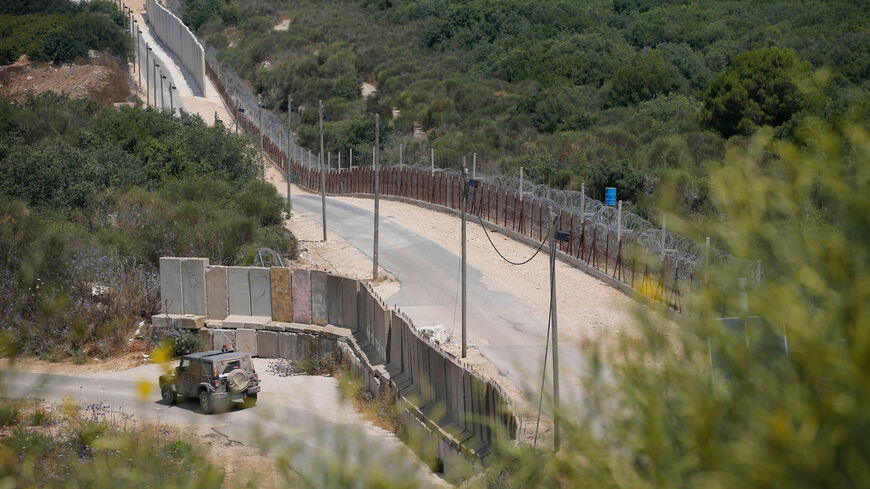TEL AVIV — Tensions between Israel and Hezbollah registered a new peak these past few days, with the Lebanon-based group staging an unprecedented show of force mid-May in southern Lebanon, and the Israel Defense Forces launching an exceptionally large multifront military exercise across the country on May 29.
All this was taking place against the backdrop of mounting threats by Prime Minister Benjamin Netanyahu and Defense Minister Yoav Gallant against Iran, and resurgent hints of preparations for an Israeli military offensive against Iranian nuclear facilities.
The significance of the two drills — carried out almost in parallel — is clear to both sides. In fact, the Israel-Hezbollah saber-rattling provided a preview of a potential multitheater war pitting Iran and its proxies against Israel.
Hezbollah’s drill simulated a varied scenario of special forces penetrating Israel, including a takeover of Israeli communities and capture of hostages, as well as the potential launch of thousands of precision rockets and missiles at the Israeli heartland.
Israel’s multifront air, sea, land and cyber drill, codenamed “Firm Hand,” included simulated Israeli strikes inside Iran as well as a surprise Israeli attack on Hezbollah and its power centers.
"It reminds me of the gun on the table in the first act, which everyone knows will shoot in the third act," a senior Israeli security source told Al-Monitor on condition of anonymity, "but it's not necessarily the same story. Hezbollah, in our assessment, is still deterred by an all-out war with Israel, but is apparently beginning to toy with other, more limited options. It must understand that there is no limited option. This is a case of all or nothing.”
The senior security source went on to warn that if Hezbollah Secretary-General Hassan Nasrallah makes the same mistake he made in 2006, by going to war with Israel, “he will pay a much heavier price."
The Hezbollah exercise caused quite a stir in Israel and elsewhere with the countless photographs, video clips and special effects documenting the maneuver, which journalists were also invited to watch. The organization demonstrated the use of drones and motorcycles and deployment of commando units, and stressed that its arsenals also contain precision missiles and rockets that will be activated in real-time.
That being said, not everyone in Israel was impressed by this show of force. "There really was nothing new here," a senior Israeli military source told Al-Monitor on condition of anonymity. "We know what Hezbollah has and we don't need showcase maneuvers to learn about it. In our opinion, this extravagant exercise was a mistake and caused damage to Hezbollah in quite a few areas."
According to the military source, the exercise provoked domestic Lebanese anger against the organization and its continued provocations of Israel, and also drew considerable criticism in the Sunni Arab world, which sees Hezbollah as a collaborator of Iran and a negative factor contributing to regional instability.
The military source added that Hezbollah’s drill also underscored Israel's claims that Hezbollah was constantly violating United Nations Security Council Resolution 1701 which ended the 2006 Israel-Lebanon war and banned maneuvers or operations by either side along the border. In fact, Israel submitted a formal complaint against Lebanon on Thursday to the UN Security Council, over what Israel’s UN envoy Gilad Erdan called "Hezbollah's provocations."
"Even the fact that the organization exposed its elite Radwan Force in such a blatant way will not work in its favor," the military source told Al-Monitor. "Until now this was a clandestine force operating under the radar and suddenly it is put on display. This helps us to add them to our target bank and Hezbollah knows that very well. I'm not sure everyone in Hezbollah liked this idea of drums and whistles and public exposure," he added.
But Israel was not shy about putting its prowess on display, either, demonstrating its ability to hit distant targets and wage war on many fronts, simultaneously. Netanyahu and Gallant were invited to observe some of the action and took the opportunity to issue harsh direct threats against Iran and suggest once again that Israel would thwart Iran’s attempts to achieve nuclear weapons capability.
Another guest who observed the exercise was CENTCOM commander Gen. Michael Kurilla. It was Kurilla's second visit to Israel in a month and his eighth in 14 months. It is not entirely clear to anyone in Israel whether Kurilla’s visits are intended to study Israel's military capabilities or to make sure that it does not surprise the United States with a sudden attack on Iranian targets, or both. One way or another, it is clear to both sides that they depend on each other. Israel will not be able to strike a real blow to Iran's nuclear program without US assistance.
Israel has budgeted billions of shekels in the past two years to prepare a credible military option against Iran and against its proxies. The Israel air force and other arms of the military are currently formulating an operational plan, which will be presented to the ministerial security Cabinet later this year.
To what extent all this activity is being synchronized with the Iranian timetable and with the intentions of the US administration remains unknown. Israel's National Security Advisor Tzachi Hanegbi and Strategic Affairs Minister Ron Dermer met on Thursday in Washington with US National Security Advisor Jake Sullivan, discussing among other things diverse Iranian threats.
The United States is said to be pleased with the warmongering and sword-rattling from Israel, viewing it as a means of pressuring Iran with a viable, albeit Israeli, military option. Reports about a possible renewal of negotiations between the United States and Iran on an agreement that would entail a freeze on part of the Iranian nuclear activities in exchange for the lifting of sanctions are generating concerns in Israel.







